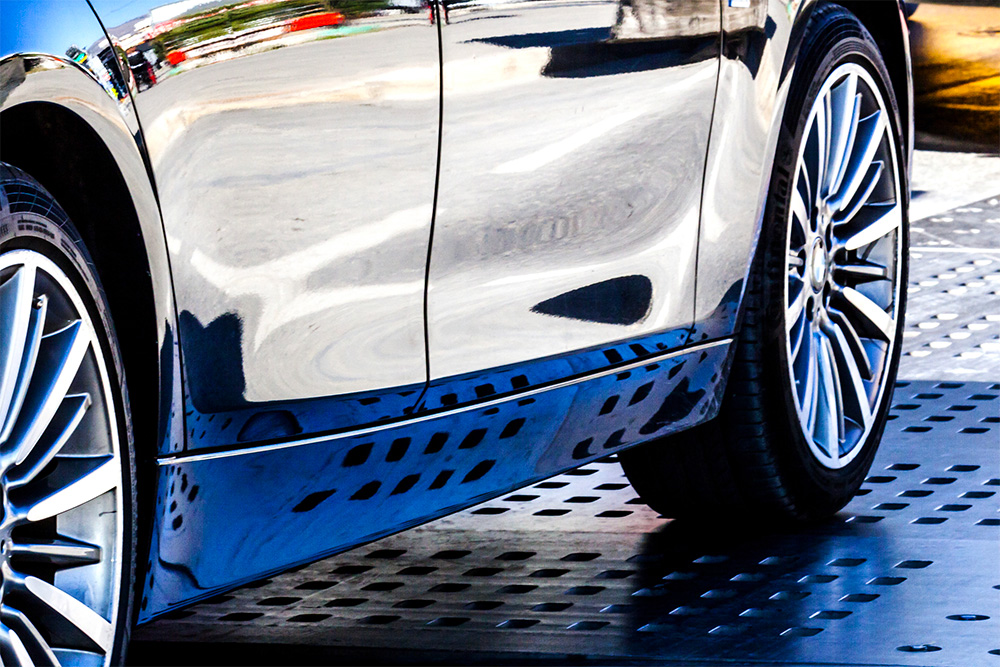Ceramic Wax: The Winter Weather Beater

The first rains of autumn already have arrived and splashed all the road grime onto your beautiful vehicle. What to do?
Drivers can prep their vehicles for winter storms and retain a sparkle throughout winter with ceramic-based waxes. They go on easy and can last through the roughest parts of winter.
"Applying ceramic wax is an easy way to add maximum protection prior to winter months," said Mike Pennington of Meguiar's, which recently introduced its Ultimate ceramic wax. "It's always best to apply a barrier of protective protective coating before harsh weather arrives.
"Not only does it keep your vehicle looking great, but a ceramic-based wax makes it easier to remove road grime when you wash your vehicle."
Carnauba and silicon products have been a staple of car pros for years. They are known for keeping your vehicle looking great by providing a layer of protection between environmental contaminants and your vehicle’s surface.
Enter ceramic-based waxes and polishes. They can extend the life of your wax application and save you some elbow grease as well. The goal is to prevent dirt, grime, and stain marks from appearing on the paint job and ruining the clear coat.
Technically, ceramic-based waxes are man-made solutions that bond with the surface of your vehicle. They provide excellent hydrophobic characteristics and are easy to apply.
Ceramic-based solutions can prevent a stronger barrier to winter grime and summer sun compared to carnauba products. As a result, they help reduce staining and fading on your vehicle’s painted surfaces. They also increase the glossy nature of clear coat finishes--as if your vehicle just rolled off the factory floor.
Traditional wax usually wears off after four or five washes. Ceramic based wax lasts longer on the surface and protects better. It creates more gloss, shine and clarity--that ‘glassy look’ that car lovers want.”
Ceramic wax products tout the inclusion of “silicon dioxide” (shown as SiO2). Found in quartz and sand, SiO2 helps with application and bonds to your vehicle’s painted surface. Ceramic waxes can withstand weeks or even months of abuse from winter road grime and summer heat.
In contrast, carnauba wax is a naturally occurring substance derived from the leaves of Brazilian palm trees (Copernicia prunifera). It is a commonplace, inexpensive product that provides a protective layer and high gloss.
Yet, carnauba typically requires regular applications--perhaps every month or two during sloshy winter or hot summer months-- to maintain its hydrophobic characteristics.
Detailing experts offer the following suggestions and benefits of using ceramic-based waxes or polishes:
- Ceramic--based waxes extend the shine of your vehicle by weeks or longer. This is especially helpful for vehicles left outside or driven daily in harsh summer or winter conditions.
- Look for products specifically labeled “ceramic” (usually combined with the term “SiO2”) to provide the latest technology in auto surface protection.
- Choose the product that best suits your car care needs. For instance, you may find ceramic waxes in car wash solutions, or a spray-on wax and detailers for quick clean-up use on contaminants such as bird droppings or sap.
- Make sure to read application directions before applying ceramic wax. It is not necessarily the same as applying carnauba products. Use a terry cloth or microfiber towel to apply and remove the wax. It must be applied to clean surfaces and should not be allowed to dry on painted surfaces. Wipe thoroughly.
- For a quick solution, have your vehicle cleaned at an automated drive-through wash which offers ceramic-based wax application. The process does not last as long applying ceramic wax manually, but drivers benefit from improved protection against winter weather.
Article by Jay Alling, editor of Sensible Driver. Write to jay@sensibledriver.com.